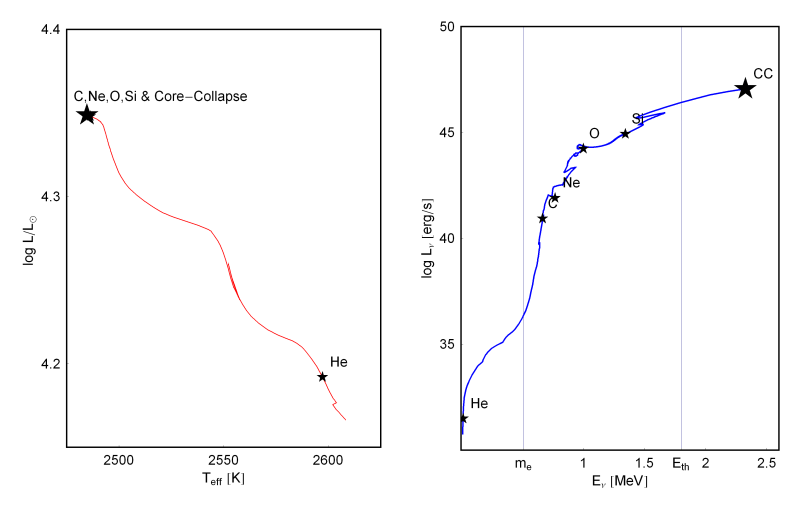| PSNS index |
Astrophysical sources of the neutrinos |
Neutrino processes and spectra | Artwork | Presentations | Publications | Numerical data and codes | People and collaboration | Astro-neutrino links |
Clearly, using slightly upgraded with gadolinium trichloride Super-Kamiokande detector we are able to predict core-collapse of the supernova Betelgeuse a week before start of an actual explosion! Betelgeuse is only 130 parsecs (425 light years) away from Earth, and it highly unlikely it explodes in the course of our lifetime. Bigger and more advanced detectors hovewer, will perform much better .
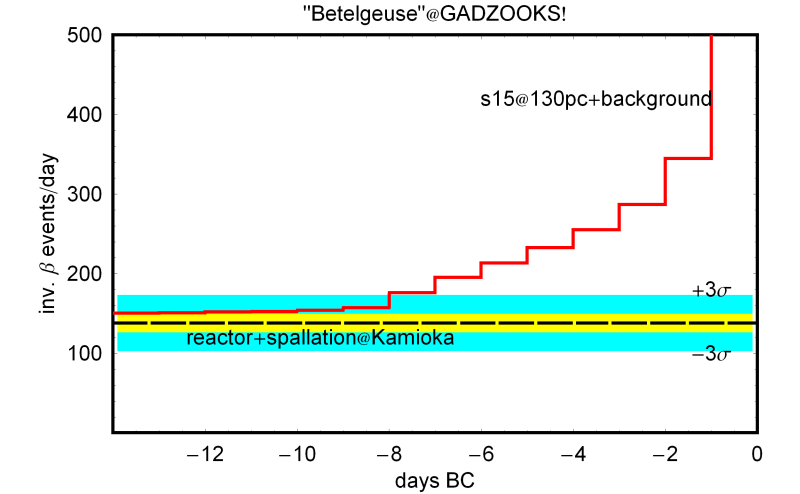
On left average electron anti-neutrino energy (red curve) and
average energy increased by the standard deviation of the
energy spectrum (blue curve). On right electron anti-neutrino
luminosity. "Time BC" means "time before collapse".
Click on figure for full resolution image. PDF and EPS
is also available.
Only pair annihilation and plasmon decay is included in calculations.
PDF , EPS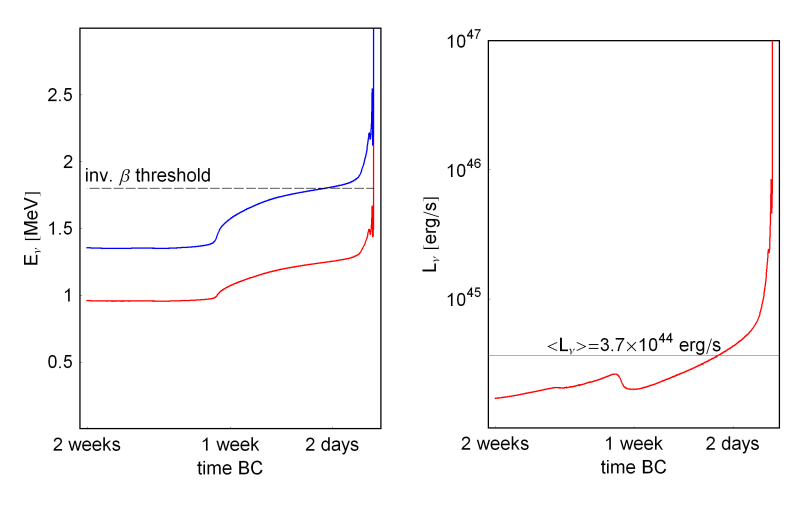
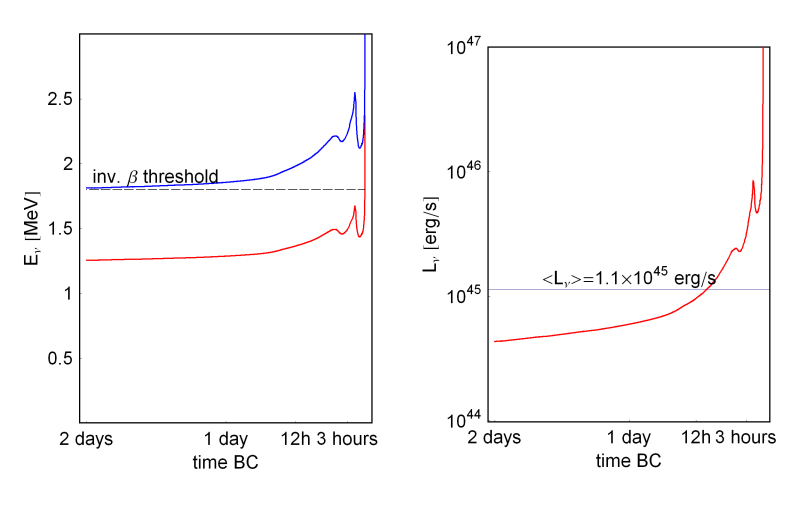
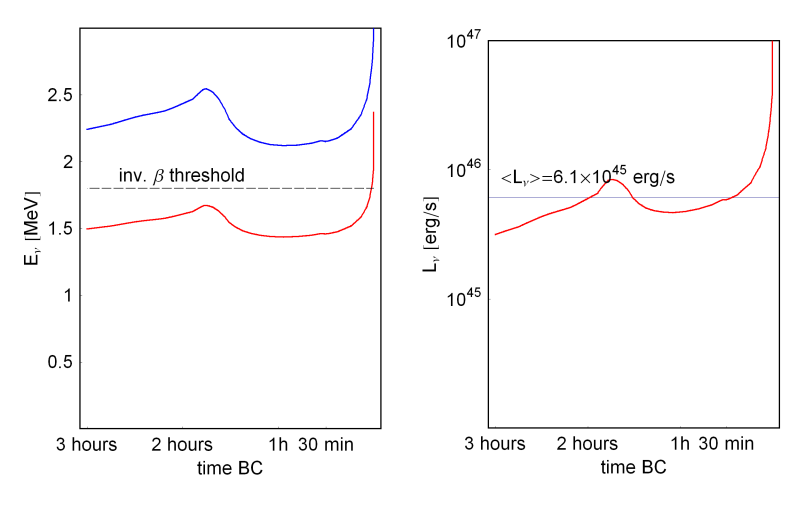
Expected monitoring range for 15 solar masses pre-supernova star. This is warning before main neutrino burst from supernova. Dependig on mass and envelope size, additional few hours are required for shock wave to travel entire star and produce optical event in the form of shock breakout flash of UV an X radiation.
Betelgeuse and Sun are depicted in this picture as read and yellow dots, respectively. Download full resolution and try to find theses dots. This will help you to imagine the size of the Galaxy.
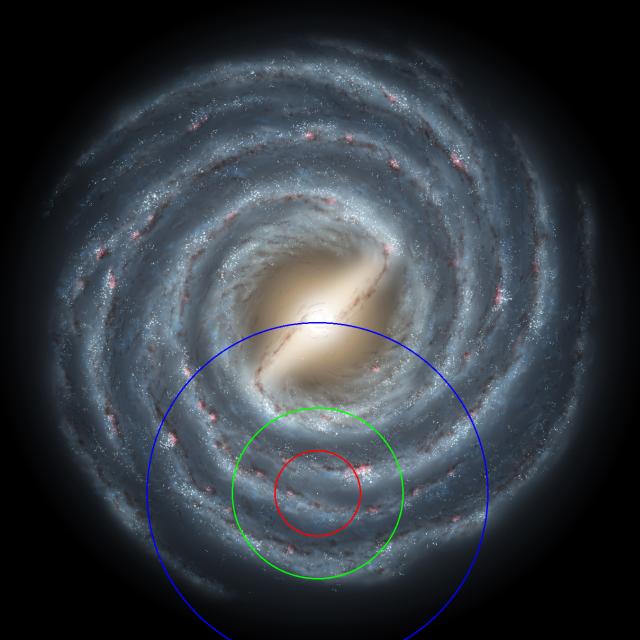
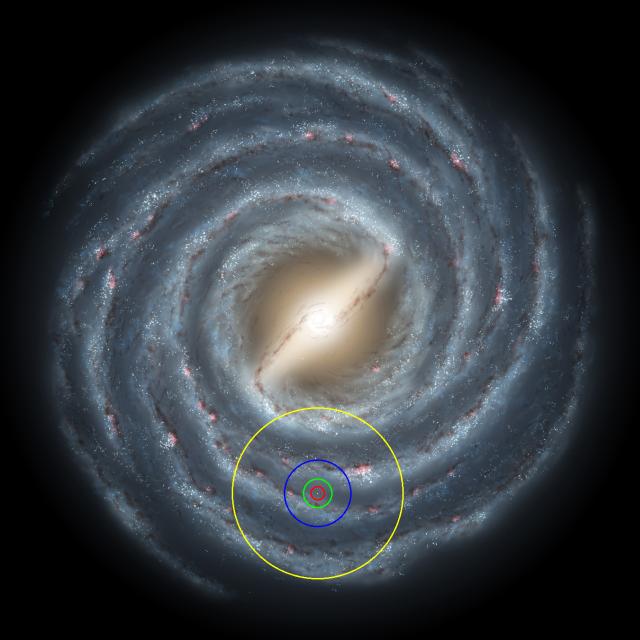
Comparison of typical Hertzpung-Russel diagram for 15 solar masses star, and equivalent version in neutrinos. Between He and C ignition blue curve on right cross line indicating mean energy of me=0.511 MeV: thermal neutrino emission switches from plasmon decay dominated regime into pair-annihilation dominated cooling.
PDF , EPS (these diagrams do not include plasmon decay!)